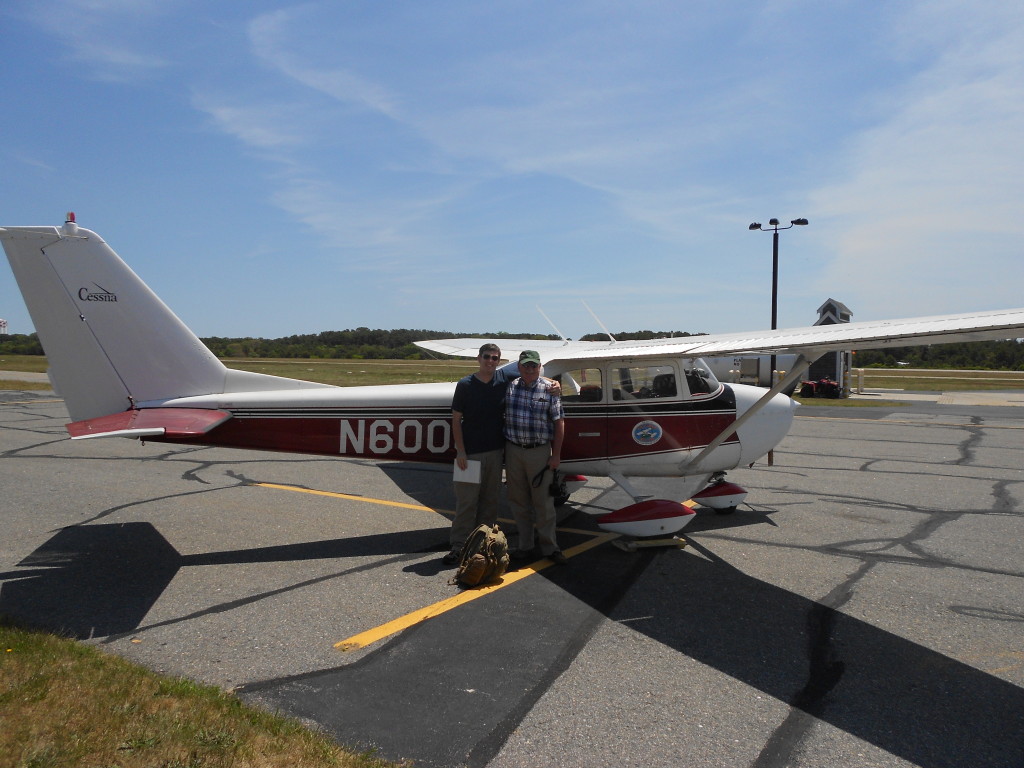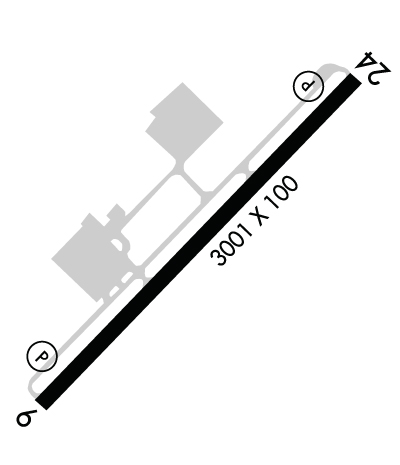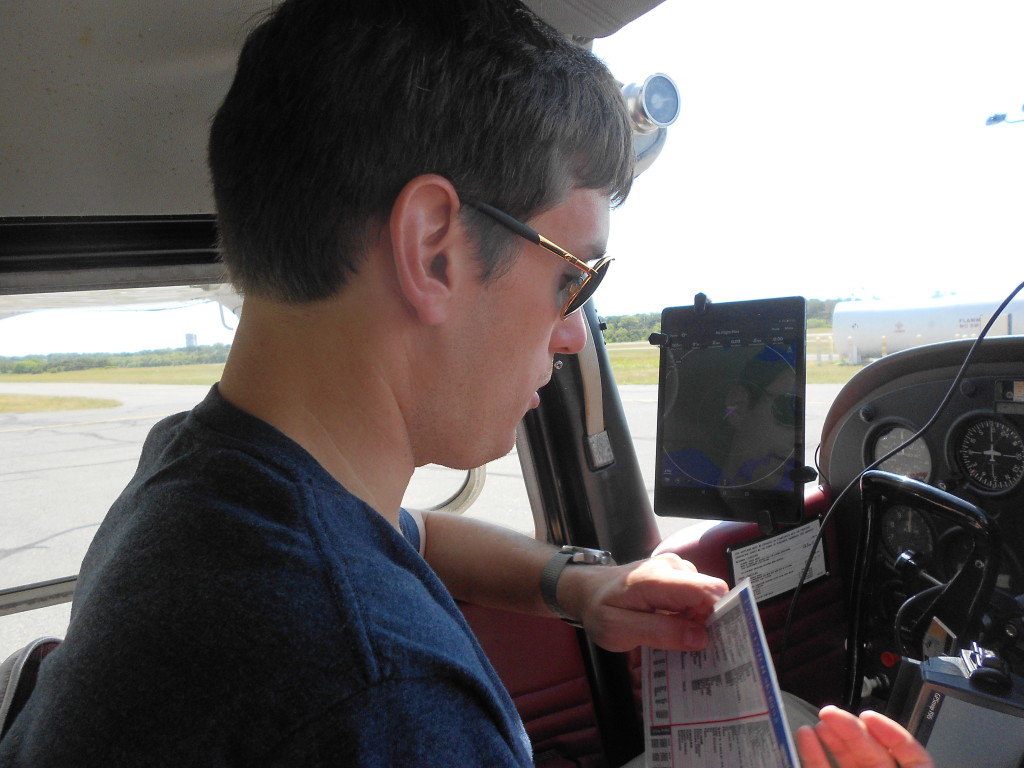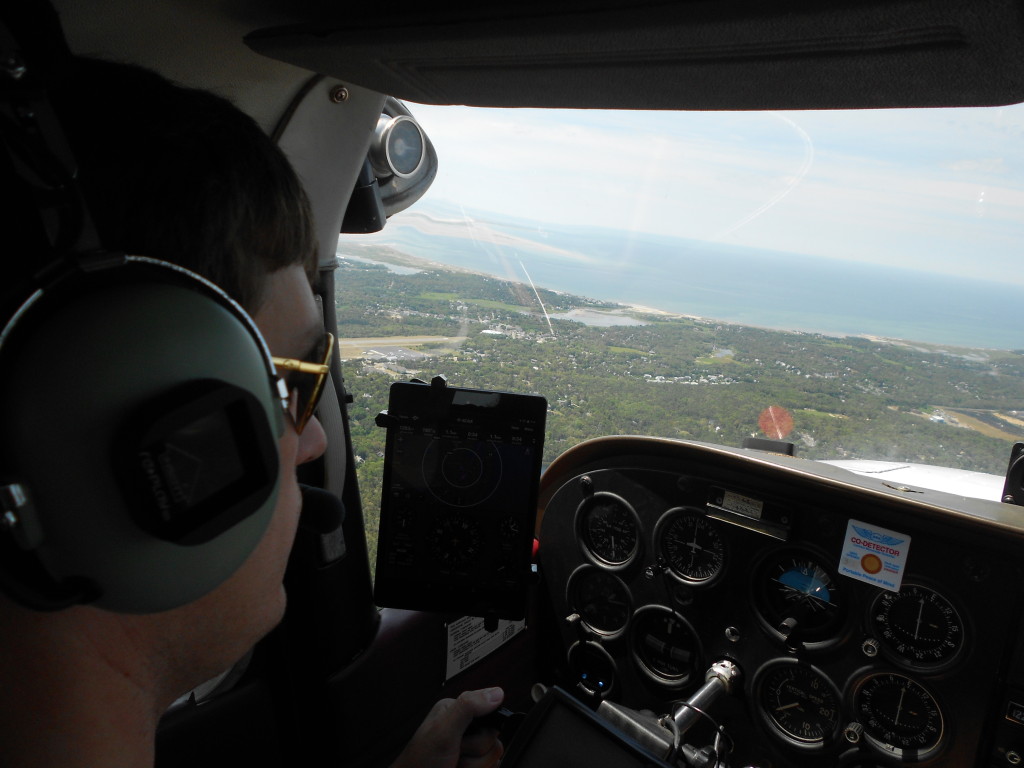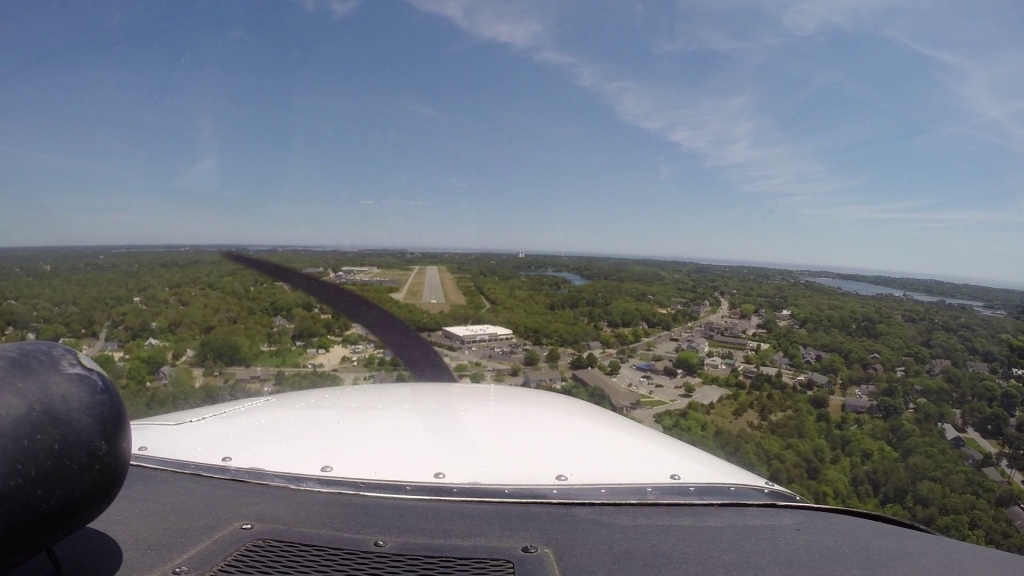For the last couple weeks I’ve been prepping for a flight around Cape Cod. This would be my first chance to take my parents flying since getting my Private Pilot certificate, and I was really looking forward to showing off what I had learned by giving them a view of the Cape that they had never seen before. Everything was set — the airplane was rented, the weather looked good, and the passengers were willing — but something happened that I’d never experienced before. I had to reject the takeoff.
The day started out absolutely perfect. There was a forecast for some scattered high level clouds throughout the day, but the only really worrying thing was that a tropical storm would be blowing in that night and would wash out the remainder of the weekend. We were good to go for that morning, but this would be our only shot.
METAR KCQX 201352Z AUTO 08005KT 10SM CLR 18/13 A3016 RMK AO2 SLP214 T01830128
When we arrived to check out the airplane, the weather could not have been more ideal. A light breeze was almost perfectly aligned with the runway, the visibility was excellent, and there wasn’t a cloud in the sky. The temperature was a little warm, but having trained in central Texas I’m used to dealing with high density altitude conditions (even though my home airport is only 577 feet field elevation). I didn’t have any concerns about my ability to handle the airplane in this kind of weather.
I had done the weight and balance calculations the night before, and as it turns out taking both of my parents at the same time in the airplane would put us just slightly overweight and move the CG just a little bit aft of the envelope. A couple of the people I fly with have told me in the past that the weight and balance figures on the 172 are conservative and overloading it a bit isn’t an issue, especially with a long runway and relatively flat surrounding areas. Even if the airplane didn’t climb as expected, I would have plenty of room to get airborne and plenty of time to climb.
Nevertheless I decided to take the parents one at a time, Mom first, so that we would be well within limits. This was an unfamiliar airplane at an unfamiliar airport and I wasn’t about to start pushing the limits.
The airport in question was Chatham Municipal, KCQX. The non-towered general aviation airport sports a single 3,001 foot paved runway as well as a grass runway parallel to the paved one for biplane operations, and field elevation is 64 feet. The surrounding area is relatively flat, but the airport is surrounded by trees and the treeline isn’t very far from the departure end of the runway.
The airplane I would be flying is a 1965 Cessna 172G with a 145 horsepower engine, a little less powerful than the 172SP I use to train back at Stinson but sufficient for the job at hand. According to the POH, the ground roll for this model of 172 should be about 865 feet, with 1,525 feet required to clear a 50 foot obstacle. Based on that performance data and the airport environment, I decided that my abort point for the takeoff roll would be halfway down the runway. If I wasn’t airborne by the time I passed the wind sock, I would throttle back and re-assess.
After doing the normal walkaround I hopped in the airplane and got my Mom situated. I gave her the usual passenger briefing and settled into my pre-flight routine, starting the engine and getting everything running. The airplane started immediately and the engine ran perfectly, so we taxied out to the end of Runway 6 for takeoff.
At this point, everything was ideal. The conditions were perfect, the airspace was very quiet, and the airplane was ready to go. I had a good feeling about the plan, and was ready to take my Mom for her first ride in a small plane around a place that she loved. So we did the run-up and headed out onto the runway for takeoff.
https://www.youtube.com/watch?v=tgu5QZkOD90
The initial takeoff roll was routine to the point of boredom. I’ve done this same procedure hundreds of times, and everything was looking normal. The airspeed indicator came alive right on schedule, and as we were nearing the wind sock it was reading a good 70 knots — right around takeoff speed. I pulled back on the yoke a bit, but all I felt was pressure. The nose lifted a little bit, but the landing gear remained firmly planted on the ground. It felt like the airplane was just a couple seconds from being ready to leap into the air, but I didn’t have enough runway to give it those extra few seconds. The abort point was coming up quickly and I needed to figure out what to do.
I figured that if I continued the takeoff, I could probably get airborne but I wasn’t confident that I could clear the treeline beyond the runway. Images of that Stinson that crashed into the treeline flashed through my head, and I definitely didn’t want to end up like that. Especially not with my Mom on board.
On the other hand, if I aborted the takeoff my Mom might not want to stick around for another try. It was vitally important to me that I showed my parents I could handle an airplane or else they might not ever want to get back in one with me down the road. I didn’t want to scare them off, and I definitely didn’t want to have to scrub the mission. We had been planning this for weeks, and in my mind to not be able to complete the mission at hand would be a disaster. The entire day was planned around this flight. I had a case of get-there-itis like you wouldn’t believe.
There’s also the minor detail of the embarrassment of a rejected takeoff. The airport was small, but it had a diner upstairs that was packed to the rafters. People were watching me and judging, which added some pressure to the situation.
That all took a couple seconds to process, and by the time I made my decision I was just passing the wind sock. I pulled the throttle back to idle, announced my rejected takeoff on the CTAF, and taxied off the runway. The FBO I was renting the airplane from called back on the CTAF, a little concerned.
FBO: 06R, is everything all right out there?
Me: Yeah, I just wasn’t airborne by my calculated takeoff point. I’m going to check some things and try again.
FBO: OK.
And now I felt like the FBO was questioning my abilities just a little bit. Great.
As I was going back to the beginning of the runway, I thought about the situation. I wasn’t quite ready to give up the mission just yet, not so long as I had another trick up my sleeve. The problem was that I wasn’t getting enough lift so I needed to increase the surface area of the wings a bit to get off the ground. 10 degrees of flaps should do the trick and using the short field takeoff procedure should ensure that I get airborne and over the obstacle with altitude to spare. It wouldn’t be quick, but it should work.
Back at the beginning of the runway I added 10 degrees of flaps and headed back out — using all available runway this time and nearly clipping the runway end identifier lights. At 65 knots I pulled back on the controls and the airplane jumped into the air, just as it is supposed to and well short of my abort point. I leveled off about 100 feet up, gave the engine some time to build airspeed, then pulled in the flaps and started my slow climb to 2,500 feet.
The rejected takeoff had me spooked.
I was airborne and cruising along normally, but I was starting to get nervous about landing. The lack of lift on takeoff made me question whether the airplane could pull off a go-around if needed and made me wonder about whether the approach path I had used so many times before would be OK in this situation. I have a tendency to drift a little low on final, which leads to a very shallow approach and requires a bit of engine work to get the plane over the threshold. This gets me on the ground with minimal energy left to bleed off in the flare but it also means I have less available energy should something happen on final. It’s a bad habit I picked up practicing short field landings that I haven’t been able to shake yet.
Coming back in to land I decided to make some changes and set myself up differently. Instead of 40 degrees of flaps I only put in about 25, which would give me the extra lift I needed without all the extra drag. I wanted to land a bit fast, since that extra airspeed would mean better go-around performance and more options on final. I definitely didn’t want to screw this one up. In the end, the landing was a little bumpy but serviceable. The airplane flew on approach exactly like it flies in San Antonio, and that little extra bit of airspeed just meant some extra time in the flare.
Now confident in my plane and my skills, I dropped my Mom off and picked up my Dad to repeat the process. But that’s another story for another time.
